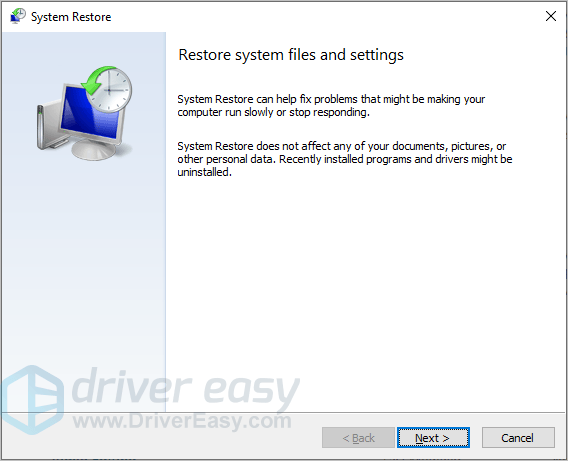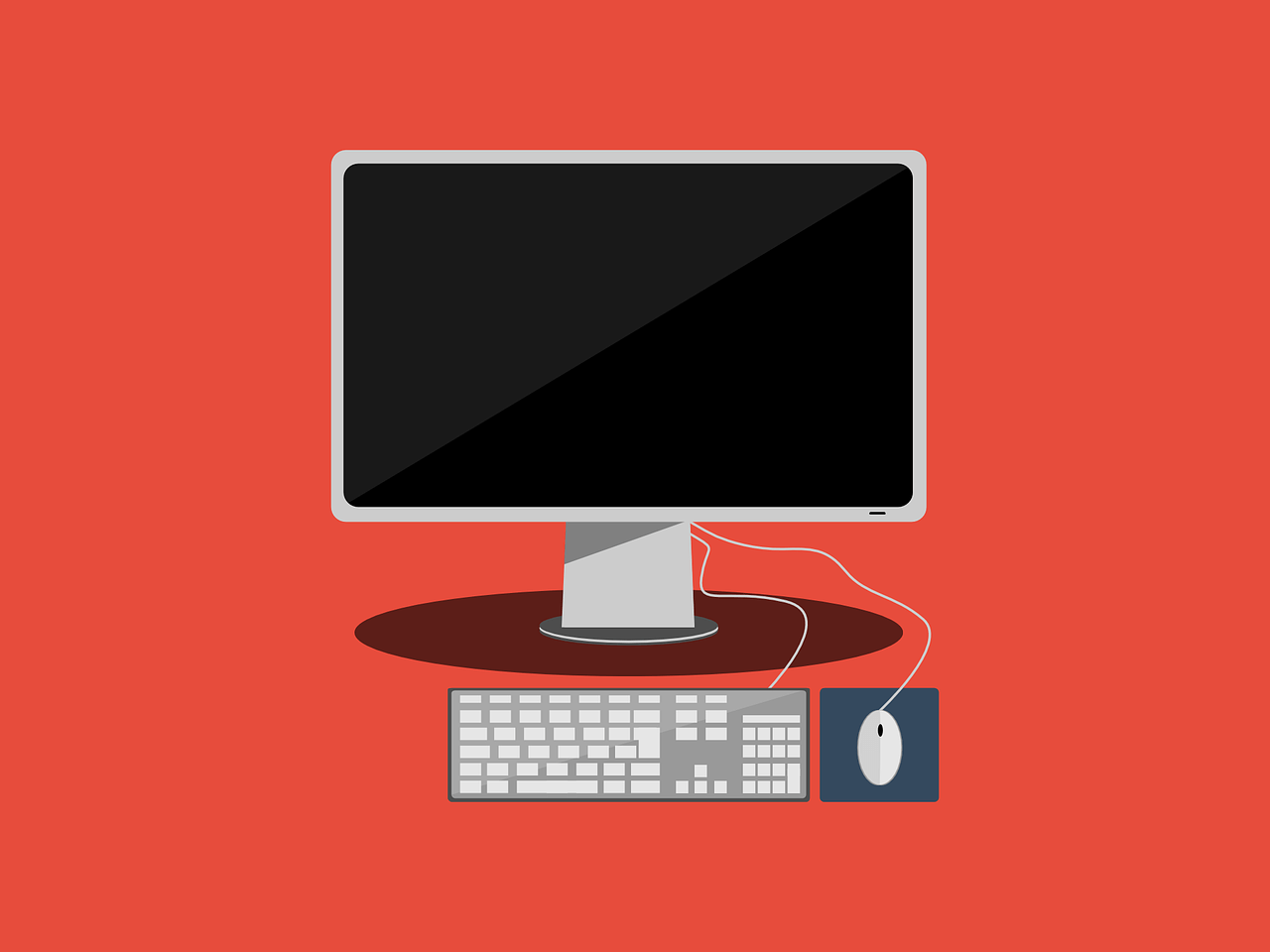You’re experiencing a black screen issue with your Windows computer? Don’t worry! Although this is an infuriating issue, you’re definitely not the only person to experience it. And more importantly, this issue can be fixed…
Try these fixes
The following are the fixes you can try. You may not have to try them all; just work your way down the list until you find the one that works for you.
If your black screen issue happens before Windows starts to load:
If your black screen issue happens after the loading of Windows:
- Wake up your screen
- Check your project settings
- Restart Windows Explorer
- Hard reset your computer
- Enter safe mode
Hard reset your computer
This is the first thing you should try when you’re having a black screen issue. To hard reset your device:
- Press and hold the power button of your computer until it’s turned off.
- Disconnect the power cable and the battery (if any) from your computer.
- Leave your computer for over 1 minute.
- Re-connect the power cable (and the battery) to your computer.
- Turn on your computer.
Then check to see if this has fixed your black screen issue. If not, don’t worry. There are still other fixes you can try…
Undo your recent changes
Your black screen issue occur when you’d made changes to your computer or connected any devices to your computer?
If that’s the case for you, try undoing these changes. Then see if this gets rid of your black screen issue.
Hopefully it does. But if not, then move on to the fix below.
Check your hardware devices
Perhaps your black screen problem is caused by your hardware issue. You should take a look at your hardware devices to check for any hardware problems. There are a few things you should do:
Adjust your display brightness
Adjust your display (monitor/TV/…) brightness to make sure you’re not experiencing a black screen issue just because the screen is too dark.
Check for connection issues
Check if all your connections (cable/power/…) is working properly. You may need to try using a different ports or cables to fix connection issues.
Try a different display
Test your computer with another display (monitor/TV/…) to see if your black screen issue is not caused by your display.
Reinstall your memory
It is also possible that your black screen issue is happening because the memory (RAM) on your computer isn’t working properly. To fix this issue, you can try reinstalling your memory:
- Turn off your computer and disconnect the power cable and the battery (if any) from it.
- Remove the cover on your computer. (You may need to check the manual or the official guides of your product for instructions on how to do this.)
- Remove the memory from your computer. (Check out the screenshots below to see what memory looks like)

What desktop RAM looks like. 
What laptop RAM looks like. - Rub the golden contact of your memory with an eraser. (This can clean the golden contact of your memory.)
- Install the memory back to your computer.
- Place the cover back to your computer.
- Connect the power cable and the battery back to your computer.
- Turn on your computer and see if your issue is fixed.
Hopefully, this fix helped you get rid of your issue.
Wake up your screen
This is an effective way to fix your black screen issue. To wake up the screen of your computer:
- On your keyboard, press the Windows logo, Ctrl, Shift, and B keys at the same time.
- If you’re using a Windows tablet, simultaneously press the volume up (+) and volume down (-) buttons three times within 2 seconds.
Hopefully this has fixed your black screen issue. If not, don’t worry. There are still other fixes you can try…
Check your project settings
It’s also possible that your you’re having your black screen issue because you’ve projected your computer to the wrong screen. To check the project setting:
- On your keyboard, press the Windows logo key and P at the same time.
- Select any option except Second screen only (or Projector only on Windows 7).

If this works for you, you should see your computer screen again. But if not, don’t worry, there are still other fixes for you to try…
Restart Windows Explorer
Your black screen issue can also be fixed by restarting the Windows Explorer process. To do so:
- Press the Ctrl, Shift and Esc keys on your keyboard at the same time to open Task Manager.
- Right click the Windows Explorer (or explore.exe) process, then click End task (or End Process).

- Click File, then click Run new task (or New Task).

- Type explore.exe, then press Enter on your keyboard.

This should restart your Windows Explorer process.
If this fix didn’t resolve your problem, move on to the fix below…
Hard reset your computer
A hard reset of your computer is helpful for fixing your black screen issue. To do this:
- Press and hold the power button of your computer until it’s turned off.
- Disconnect the power cable and the battery (if any) from your computer.
- Leave your computer for over 1 minute.
- Re-connect the power cable (and the battery) to your computer.
- Turn on your computer.
If this worked for you, great! But if not, there are two more fixes for you to try…
Enter safe mode
Your black screen may not occur in safe mode. Try enter this mode
If you don’t know how to get in to safe mode, follow the step-by-step instructions in this post.
If you’re able to enter safe mode and see your screen, try the fixes below to get rid of your black screen issue.
Update your device drivers
Perhaps you’re having the black screen issue because you’re using a wrong device driver or it’s out of date. If that’s the case for you, you should update your device drivers on your computer.
There are two ways you can update your drivers:
Option 1 – Manually – You’ll need some computer skills and patience to update your drivers this way, because you need to find exactly the right the driver online, download it and install it step by step.
OR
Option 2 – Automatically (Recommended) – This is the quickest and easiest option. It’s all done with just a couple of mouse clicks – easy even if you’re a computer newbie.
Option 1 – Download and install the driver manually
Your device manufacturers keep updating drivers. To get them, you need to go to the their official websites, find the drivers corresponding with your specific flavor of Windows version (for example, Windows 32 bit) and download the driver manually.
Once you’ve downloaded the correct drivers for your system, double-click on the downloaded file and follow the on-screen instructions to install the driver.
Option 2 – Automatically update your drivers
If you don’t have the time, patience or computer skills to update the drivers manually, you can do it automatically with Driver Easy.
Driver Easy will automatically recognize your system and find the correct drivers for it. You don’t need to know exactly what system your computer is running, you don’t need to risk downloading and installing the wrong driver, and you don’t need to worry about making a mistake when installing.
You can update your drivers automatically with either the FREE or the Pro version of Driver Easy. But with the Pro version it takes just 2 clicks:
- Download and install Driver Easy.
- Run Driver Easy and click the Scan Now button. Driver Easy will then scan your computer and detect any problem drivers.

- Click Update All to automatically download and install the correct version of all the drivers that are missing or out of date on your system (this requires the Pro version – you’ll be prompted to upgrade when you click Update All).

You can do this for free if you like, but it’s partly manual.
Revert your system from a restore point
You can also fix your black screen issue by reverting your Windows system to a previous state. You do this with System Restore. Here’s how:
- On your keyboard, press the Windows logo key and R to open the Run dialog.
- Type rstrui.exe in the Run box, then press Enter.

- Follow the on-screen instructions of the System Restore wizard to restore your system from a restore point.

- Check to see if this fixes your black screen issue.
Hopefully one of the fixes above helped you resolve your problem. If you have any questions or suggestions, you’re more than welcome to leave us a comment below.






